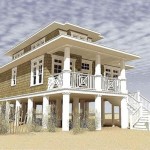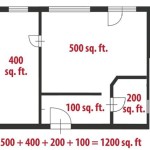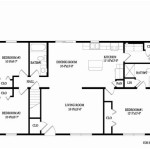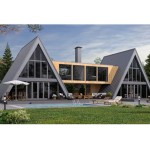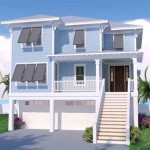Best Small House Plans Under 1000 Sq Ft
The allure of small house living continues to grow, driven by factors such as affordability, sustainability, and a desire for a simpler lifestyle. Small house plans, particularly those under 1000 square feet, offer a compelling alternative to larger, more expensive homes. These plans require less maintenance, consume fewer resources, and can be strategically designed to maximize space and functionality. This article will explore various aspects of small house plans under 1000 sq ft, offering insights into their benefits, design considerations, and popular styles.
A house plan is a set of construction drawings that define all the engineering and architectural specifications of a residential house such as dimensions, materials, layouts, installation methods and techniques. House plans under 1000 sq ft offer a cost-effective housing solution especially in areas with a high cost of living. Due to the smaller square footage, these homes are more affordable to build, maintain and less expensive to furnish.
House plans under 1000 sq ft are ideal for people looking for minimalist living. They come with a reduced carbon footprint due to lower construction costs, less energy consumption compared to their larger counterparts. They also include features that maximize available space and promote efficient living, such as open-concept layouts, built-in storage solutions, and multifunctional furniture.
Benefits of Choosing a Small House Plan
Several advantages contribute to the increasing popularity of small house plans. These benefits extend beyond financial savings and encompass environmental and lifestyle considerations.
Firstly, the reduced construction cost of small house plans translates into significant savings. They require fewer materials, less labor, and shorter construction timelines, resulting in lower overall expenses. This affordability makes homeownership more accessible to a wider range of individuals and families, especially first-time buyers or those seeking to downsize.
Secondly, the maintenance costs associated with smaller homes are significantly lower. Less square footage requires less cleaning, less repair work, and less landscaping. This translates into lower utility bills, reduced property taxes, and fewer unexpected expenses, freeing up resources for other priorities.
Thirdly, small house plans promote sustainable living. Smaller homes consume fewer resources during construction and operation. They require less energy for heating, cooling, and lighting, reducing their environmental impact. The compact footprint also minimizes the need for extensive land development, preserving natural habitats and promoting biodiversity.
Finally, opting for a small house plan fosters a simpler and more intentional lifestyle. With less space to fill, individuals are encouraged to declutter, prioritize possessions, and focus on experiences rather than material accumulation. This can lead to a greater sense of freedom, reduced stress, and increased fulfillment.
Key Design Considerations for Small House Plans
Designing a functional and comfortable small house requires careful planning and attention to detail. Maximizing space, optimizing light, and creating a sense of openness are crucial considerations.
Open-concept layouts are the most used design element that combines living, dining, and kitchen areas. It creates a more spacious and airy feel. This eliminates the need for walls, making the house appear larger and more fluid. Strategic zoning, using furniture or changes in flooring, can define different functional zones within the open space.
Light plays a vital role in creating a sense of spaciousness. Large windows, skylights, and light wells can bring natural light into the house, making it feel brighter and more inviting. The orientation of the house should be carefully considered to maximize sunlight exposure. Artificial lighting should also be strategically employed to complement natural light and create a warm and welcoming atmosphere.
Storage solutions are essential for maximizing space in a small house. Built-in shelves, cabinets, and drawers can provide ample storage without taking up valuable floor space. Multifunctional furniture, such as sofa beds, storage ottomans, and folding tables, can serve multiple purposes, further optimizing space utilization. Vertical space should also be utilized, with tall shelves and cabinets extending to the ceiling.
Multifunctional spaces are best used to allow a single room to serve multiple purposes. A guest room can double as a home office, or a dining area can transform into a workspace. This flexibility makes the most of limited square footage. Incorporating features like desks that fold into the wall or beds that can be stored away during the day further enhances the functionality of the space.
The careful use of color and materials can also contribute to the overall sense of spaciousness. Light colors tend to make a space feel larger and more open, while dark colors can make it feel smaller and more enclosed. Mirrors can reflect light and create the illusion of more space. Durable, low-maintenance materials are ideal for a small house, as they require less cleaning and upkeep.
Popular Styles of Small House Plans Under 1000 Sq Ft
Small house plans are available in a variety of styles, each with its unique aesthetic and functional characteristics. These styles can be tailored to individual preferences and regional architectural traditions.
Cottage-style homes are characterized by their charming, rustic appeal. They typically feature gabled roofs, dormer windows, and cozy interiors. Cottage-style small house plans often incorporate natural materials such as wood and stone, creating a warm and inviting atmosphere. These plans are well-suited for rural or suburban settings.
Modern-style homes are defined by their clean lines, minimalist aesthetic, and emphasis on functionality. They typically feature flat roofs, large windows, and open-concept layouts. Modern-style small house plans often incorporate sustainable materials and energy-efficient technologies. These plans are well-suited for urban or contemporary settings.
Craftsman-style homes are known for their handcrafted details, natural materials, and emphasis on quality craftsmanship. They typically feature gabled roofs, wide porches, and exposed rafters. Craftsman-style small house plans often incorporate built-in features and custom woodwork. These plans are well-suited for those who appreciate traditional design and attention to detail.
Tiny House plans are specifically designed for minimal living. The homes usually range in size from 100 to 400 sq ft. These homes emphasize simplicity, sustainability, and affordability.
Choosing the right style for a small house plan depends on individual preferences, lifestyle, and the surrounding environment. It is important to consider the architectural character of the neighborhood and select a style that complements the existing surroundings. Consulting with an architect or designer can help in selecting the best style and customizing it to meet specific needs.
Prefabricated (prefab) or modular homes offer a potentially cost-effective route to building a small house. These homes are constructed in sections in a factory and then assembled on-site. This method can reduce construction time and potentially lower costs. While some view prefabricated homes as lacking in customization options, many modern prefab companies offer a range of design choices and finishes.
When evaluating different small house plans, assess the layout to ensure it aligns with your lifestyle and needs. Consider the flow between rooms, the placement of windows and doors, and the amount of storage space. Think about how you will use each space and whether the plan accommodates your daily activities. A well-designed layout will maximize functionality and create a comfortable living environment.
Consider the potential for future expansion, even if you are committed to a small house initially. Leaving room for a future addition, such as a sunroom or a small guest house, can provide flexibility as your needs evolve. Planning for this potential expansion early in the design process can simplify the process later on.
When designing a small house, it's crucial to work with qualified professionals, including architects and builders. Their expertise can ensure that the design is structurally sound, energy-efficient, and compliant with local building codes. They can also provide valuable insights and guidance throughout the design and construction process.
Universal Design principles should be incorporated when designing a small house, as they make the space accessible and usable for people of all ages and abilities. This can include features such as wider doorways, grab bars in bathrooms, and lever-style door handles. Incorporating these principles can make the house more comfortable and convenient for everyone, regardless of their physical capabilities.
Before finalizing a small house plan, it is imperative to research and comply with all applicable building codes and regulations. These codes vary by location and can impact various aspects of the design, including structural requirements, energy efficiency, and fire safety. Failing to comply with these regulations can result in costly delays and penalties.
Energy efficiency is a top priority in small house design. Implementing energy-saving features not only reduces environmental impact but also lowers utility bills. Insulation materials, such as spray foam or cellulose, are critical for minimizing heat loss in cold climates and preventing heat gain in warm climates. Efficient windows and doors with low-E coatings can further reduce energy consumption.
Incorporating renewable energy sources, such as solar panels or geothermal heating and cooling, can significantly reduce reliance on fossil fuels. While the initial investment may be higher, the long-term savings and environmental benefits make it a worthwhile consideration. Government incentives and tax credits may also be available to offset the cost of renewable energy systems.
Water conservation is another important aspect of sustainable small house design. Installing low-flow toilets, showerheads, and faucets can significantly reduce water consumption. Collecting rainwater for irrigation or other non-potable uses can further conserve water resources. Xeriscaping, which involves using drought-tolerant plants, can minimize the need for watering.
Smart home technology can enhance convenience, security, and energy efficiency in a small house. Smart thermostats can automatically adjust the temperature based on occupancy and weather conditions. Smart lighting systems can be programmed to turn on and off automatically, saving energy and providing added security. Smart security systems can provide remote monitoring and alerts, protecting the house from intruders.
Landscaping can significantly enhance the aesthetic appeal and functionality of a small house. Planting trees can provide shade and reduce cooling costs. Creating outdoor living spaces, such as patios or decks, can extend the living area and provide opportunities for relaxation and entertainment. Selecting native plants can create a low-maintenance and environmentally friendly landscape.

10 Modern Under 1000 Square Feet House Plans Craft Mart

7 Ideal Small Houses Floor Plans Under 1000 Square Feet House Cottage

10 Modern Under 1000 Square Feet House Plans Craft Mart

10 Modern Under 1000 Square Feet House Plans Craft Mart

Our Top 1 000 Sq Ft House Plans Houseplans Blog Com

Our Top 1 000 Sq Ft House Plans Houseplans Blog Com

House Plans Under 1000 Sq Ft 2 Bedrooms Bathroom Granny

10 Modern Under 1000 Square Feet House Plans Craft Mart

Our Top 1 000 Sq Ft House Plans Houseplans Blog Com

10 Best 1000 Sq Ft House Plans As Per Vastu Shastra Styles At Life
Related Posts


